Tanz im August reaffirms itself as an intersection of choreographic approaches, compositional questions, and political aspects, articulated through 19 performances from almost as many countries, as well as workshops, post-show discussions, and outdoor performances. In particular, in line with the historical essence of TiA itself, which merges international pieces with national experiences, the 2023 edition celebrates dance as energy, movement, and the creation of multiple identities, where it is up to bodies and their complex kinetic identities to be the means of traversing the present.
As artistic director Carmona anticipated, the festival programme features precise curatorial paths, weaving together pieces with modern-day storytelling and mixed dance languages, discussing ecology and sustainability.
In the performances I saw, I noticed three main choreographic strands. Firstly, an urgency to use choreography as a political view of the present, often confronting the traditions of the country of origin, engaging with current protest movements, and using a means of composition characterised by a considerable theatrical and evocative impact. Then, the need to look at dance as a mirror of our human situation, from a more intimate condition to a more social one. Finally, an exploration of how dance can make us reflect on ecological issues.
Framing political discourses through revisited traditions and new narratives
The festival opens with C A R C A Ç A by Portuguese choreographer Marco da Silva Ferreira: ten bodies occupy the stage with an explosion of energy, with footwork (in house dance style) originating from clubbing and cypher battles, and where traditional Portuguese dance intersects with contemporary dance. The piece can be divided into three parts, defined by their symbolic use of space. First, the dancers, dressed in black and later with coloured inserts, perhaps reminiscent oftraditional Portuguese dress, enter playing live and move only on the margins of the stage, marked by black linoleum. In the second part, they dance in the white, central part of the stage. The third part is introduced by a curtain that cuts the stage into two sections. On this, they write ‘Alle Mauern Fallen’ (All walls fall), and then they dance using their coloured clothes as extensions of their bodies, to create, for instance, flags, or weapons.
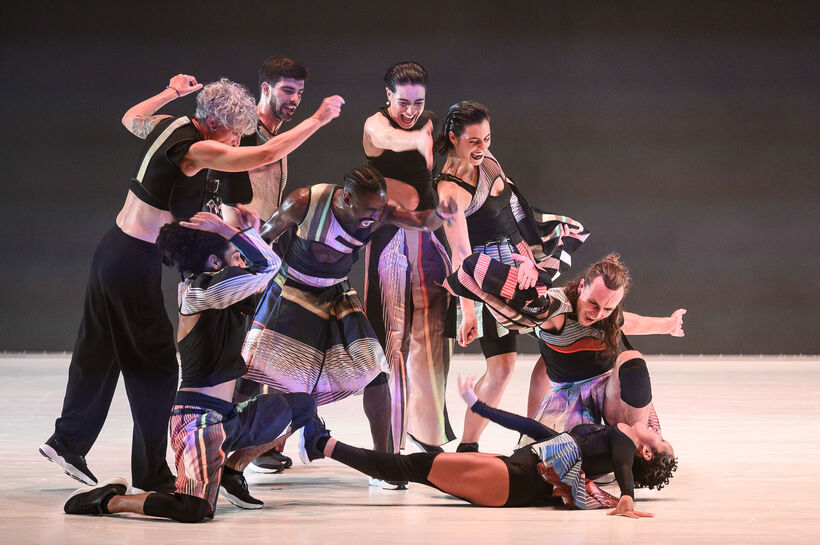
With references to various urban dance styles, some of which were once clandestine and represented forms of protest against social oppression, the movement language consists of myriad jumping and skipping steps, either close to the ground, on the spot, or across the stage. While their lower bodies are engaged in the sharp tapping of toes and heels, with crossed feet, their upper bodies remain rather rigid, upright, or bent, with their arms by their sides or, by contrast, employing very gentle movements of the chest. The choreographic spatial structure is based on geometric shapes, such as lines and circles. A feature which increases the dramaturgical tension is that the performers do not always follow the live rhythm of the music but are often arrhythmic: this implies an overload of sound and images that creates a pre-explosion effect. One of the major goals for da Silva Ferreira is to use choreography to explore how a community is born, that is, from the skeletons or carcass (‘Carcaça’) of the past, intersecting recent experiences. It is precisely in this highly energetic discharge of multiplicity of mixed dance styles that we can comprehend a possible new humanity. The impression I instantly have of this piece is that the scratchy footwork, performed with a relentless rhythm like that of a heart gone mad, is immediately able to reach the soul of the beholder. The political discourse that appears reflects the essence of the piece: as if through the gesturality of dance, one could adjust the political disconnections present in the world.
MAL - Embriaguez Divina, by Marlene Montero Freitas, perhaps appears like a celebration of an exorcism of the world’s evils. This eclectic yet dramaturgically striking piece explores the various nuances of evil. Scenes of war, grotesque camaraderie, but also friendship and death, succeed each other with a constant rhythm and with a bizarre surrealism, challenging the audience to reflect. Montero Freitas uses sharp theatrical gesturality embedded in choreography for bodies and stage structures. One of the performers' main activities is to create, destroy, and recreate paper objects that resemble instruments of war, such as tanks, as well as houses, mosques, and churches. It is almost to suggest that even evil can sometimes be fragile… Even though the performers did not take themselves too seriously, they were completely at one with the characters, so caught up in them, as if they were puppets in the hands of a fierce puppeteer, mocking the condition of life itself, celebrating a carnival.
Both Radouan Mriziga's Libya and Taoufiq Izeddiou's Hmadcha حمادشة are inspired by the traditional dances of North Africa (Libya) and from a Moroccan Sufi brotherhood, respectively. Hamdacha حمادشة is striking for both the physicality of the dancers, an ensemble of a dozen men in long black trousers and with bare chests, and for the choice of combining Sufi dances with Western-informed contemporary dance. On the other hand, Libya is a vigorous choreographic composition where traditional dances are intertwined with more contemporary movements. This connection certainly offers a useful analysis for understanding the direction of the modern world. In the same vein, C la vie by Serge Aimé Coulibaly aims to celebrate the joy of life against a backdrop of political instability in Burkina Faso. Putting forward a piece with a high energetic impact, capable of hypnotising the audience with its density, he succeeds in his goal. A dramaturgical progression, which never becomes repetitive, combines with a study on movement, reinterpreting the roots of Burkina Faso tradition through contemporary choreographic language.
Dorothée Munyaneza with Toi, moi, Tituba instead elaborates on the story of a woman involved in the Salem witchcraft trial with her movement and sound composition. Munyaneza's stage presence becomes particularly strong when her voice is combined with a live electronic track. Deeply evocative and intense, the musical part was, for me, stronger than the choreography.
Dancing the modern human condition
Certainly, a touching aspect of the festival programme is to show how dance can still transcend certain psychological and emotional situations.
Insel by Ginevra Panzetti/ Enrico Ticconi transports us to an island, an island that is far from being just a geographical location, rather a mental and psychological condition, demonstrated aptly by the pantomime of the performers and excerpts from Daniel Defoe, Shakespeare, and Jared Diamond. With a soundtrack of Sardinian chants, it is no coincidence that the two performers shipwrecked on stage and dressed as explorers are accompanied by what could be their shadows. The ‘shadows’ are two other performers completely dressed in black, who, in the first part of the piece, copy the two explorers in every respect and then end up in a dance all together. The piece is certainly powerful, yet at a certain point appears frayed; a clear impact which does not last for the duration, perhaps because it could benefit from being shortened.
With The Romeo, Trajal Harrell takes us back to a sophisticated catwalk soundtrack, as is his style, setting the mood of dance as a means of celebrating life and death. Watching The Romeo, I asked myself how a catwalk could be so romantic? The act of walking on the balls of their feet, as if on a heel that is not there, combined with gestures that are always restrained, soft almost, in combination with the dancers’ various corporealities and their clever costume changes, culminates in a wonderful effect.
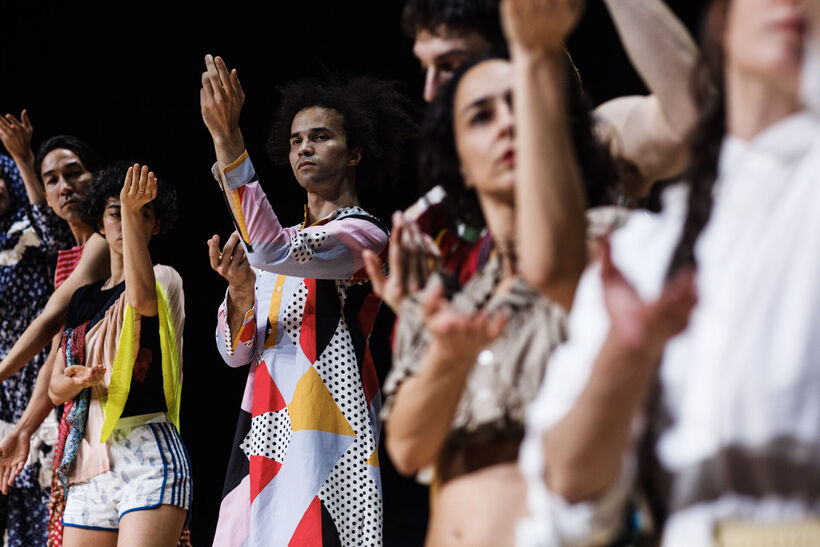
With THE AGE OF CONTENT by the Ballet national de Marseille, directed by artistic collective (LA)HORDE, we pass through a present that is already the future, with references to TV series, Tik Tok, VR, Hollywood films, and musicals. Employing a set design that is a reproduction of a warehouse on stage and theatrical props such as a full-sized remote-controlled car, a fight breaks out between the car and the dancers, (LA) HORDE employs a wide range of movement approaches. In particular, the final scene is an explosion of various dancing styles, from musical, jazz, contemporary dance, all performed tremendously. It reminded me of the opening scene of the film La La Land. The way in which they reintroduce an invasion of virtual reality in the real world, so much so that the boundary is definitely crossed, with no shortage of references and thorough body language is certainly stimulating. Nevertheless, the end result is unconvincing, perhaps because there is just too much of it, so much so that at times you almost feel as if you are flicking through TV channels and the critical distance disappears.
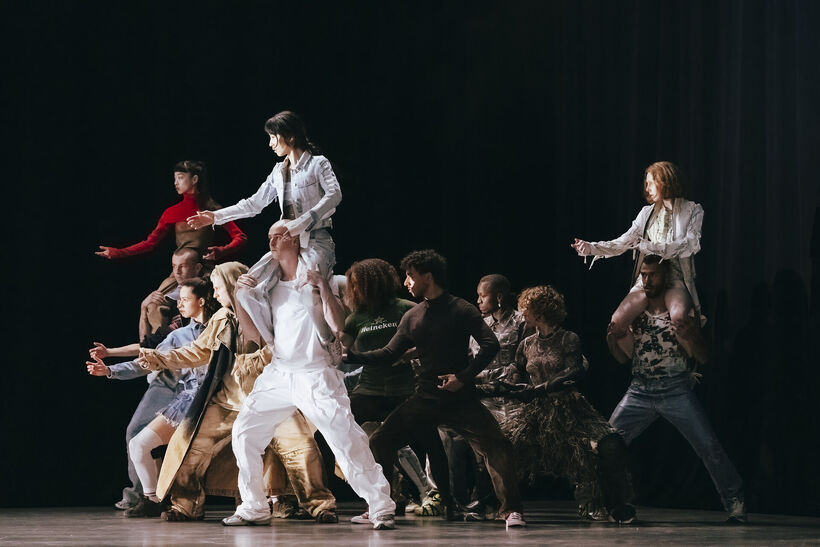
EXIT ABOVE after the tempest by Anne Teresa De Keersmaeker, Meskerem Mees, Jean-Marie Aerts, Carlos Garbin / Rosas is inspired by a journey into the roots of Western pop music and certainly feature a striking beginning: a large plastic cloud dissolves on stage during a solo following the words of Walter Benjamin’s On the Concept of History. The piece contains a certain beauty and levity, uncharacteristic for De Keersmaeker, and her compact group of dancers, led by singer Mees and dancer/musician Garbin (who also composed the music), are more than capable of supporting it. Research into walking movement is a significant feature of De Keersmaeker work, however I wonder how much research went into this specific piece as it looked rather superficial when compared to some of her previous work.
There were two moments which I found to be particularly significant during the festival: Outbox Movement Outbox Me Battle x Tanz im August and Yasmeen Godder Company in Practicing Empathy #3. Two completely different events but both were able to trigger in me the need to move by listening to others, the environment, and the energies around us.
The first was actually a 'battle', where numerous dancers challenged each other in real dance battles. I felt almost overwhelmed by the warmth, the joy, the complicit glances. It was evident that for the participants, the movement was clearly designed to be more than just a contest, rather, a relational act both with their opponent but, above all, with the audience.
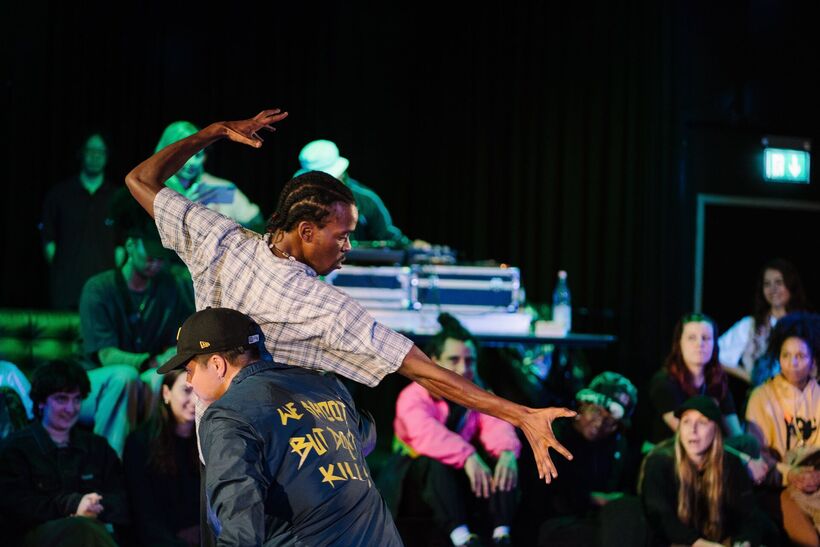
Through her specific choreographic signature, with Practicing Empathy #3 Godder is embroidering intimate movement gestures in real time. She has been working on empathy-related projects for a few years now. This solo piece, staged for herself, originated during the first lockdown and tells the story of how she, together with collaborators Gili Avissar and Gili Godiano, found ways of avoiding dancing alone in isolation by constructing wire objects, with which she interacts. Practicing Empathy #3 operates on a terrain of attentiveness to gesture and perception towards the outside. When I left the theatre, I perceived the way I was walking differently, as if my hip joint had softened.
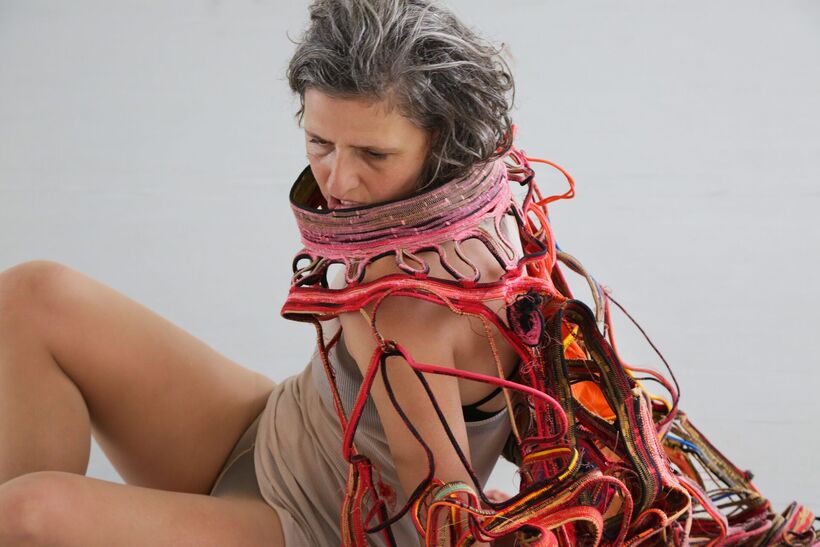
Dance and ecology outdoors
Through the Interconnecting Dance & Ecology Parcours in Berlin Parks project the festival reconnects with the city and its territory. 22 performances selected as part of a call for Berlin artists, spread across three parks. Many interesting pieces linked to the landscape that they traversed. Of those I saw, I was most impressed by Renae Shadler & Collaborators’ Under my Gaze – excerpt in Volkspark Rehberge. It featured a kind of black tent which inflated due to the running of the three performers, like the lungs of the surrounding trees.
TiA’s multi-faceted festival serves as a high-quality sample of what is in the air of current contemporary dance, across continents. By offering an open take on current dance performances, TiA invited us to confront narratives, metaphors, postcolonial discourses and to unfold them into a performative dance art form. TiA mainly focuses on bringing international acts to Berlin audiences. However, I wonder whether in the current context of great economic instability and gentrification in Berlin (which seems almost irreversible), it would be worth exploring other options which forge a directrelationship with the contemporary Berlin dance ecosystem, which is transcultural by nature. Surely Interconnecting Dance & Ecology is a valuable example of where to start.
Written from the Tanz Im August Festival, from the 9th to 26th of August 2023, in Berlin.

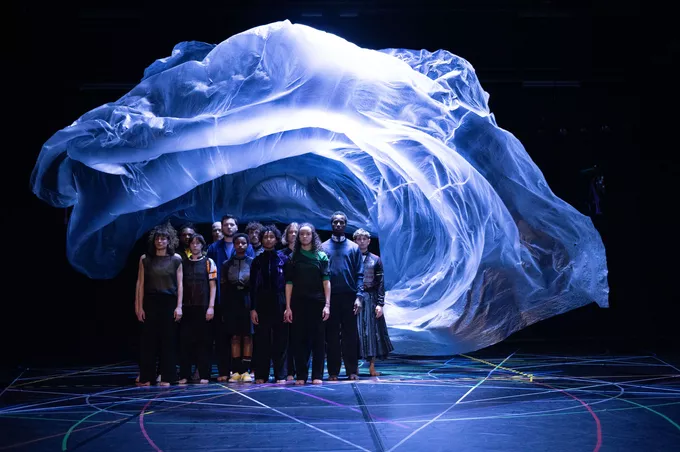

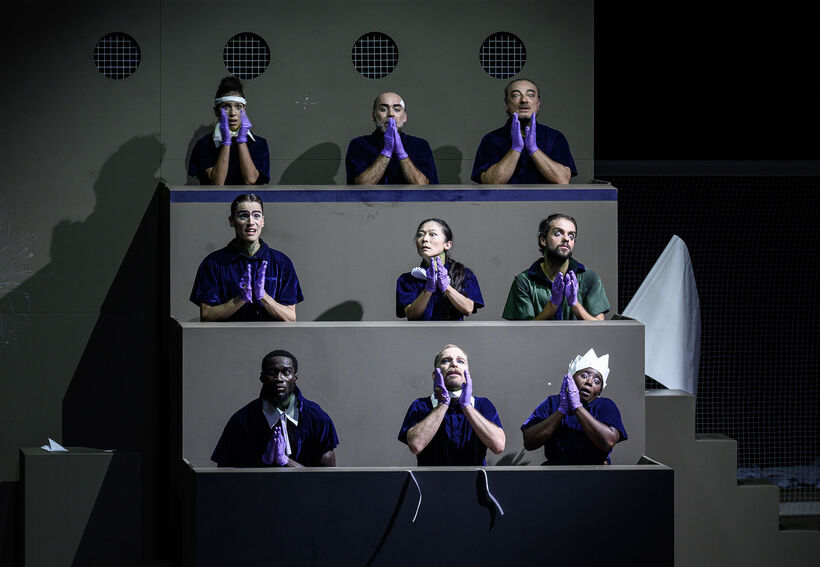


Josef Bartos
Thank you for your thoughts. One got stuck in my mind – that passion makes us different from AI. Just yesterday I read…I am a dance critic. I am a member of an endangered species